This is one in a series of posts on the Fujifilm GFX 50S and 50R. You should be able to find all the posts about that camera in the Category List on the right sidebar, below the Articles widget. There’s a drop-down menu there that you can use to get to all the posts in this series; just look for “GFX 50S”. It’s also in the Z6/7 category.
I previously received a request to test those two lenses at the FF equivalent of 135 mm (186 mm for the Fuji), and to throw the Zeiss Apo-Sonnar 135 mm f/2 into the mix. I showed you the results of that test yesterday. I noticed as I was processing the images there seemed to be some patchy blurriness that is typical of atmospheric thermal effects. I didn’t think it was enough to bias the results, so I went ahead and posted the images. I meant to mention the thermal waviness in yesterday’s post, but forget to do so. Brandon Dube, who always has a sharp eye, commented on it even without the advantage that I had of seeing multiple captures for each test condition. Therefore, I’m redoing the test.
I believe that thermal effects are prevalent in many outdoor lens tests, and thought I was sufficiently vigilant to know when it would be an issue, but this one caught me out. It in instructive for me to consider how I went wrong, and it might be useful for you all.
- The sun hadn’t been out long, and I didn’t think it would heat up the foliage much.
- 500 meters isn’t that far away.
- 135 mm isn’t that long.
- I usually check for thermals by looking at the image in the EVF at maximum magnification, but I did’t do that once I determined that, even with peaking set as high as it would go in the Z7, nothing lit up at maximum magnification, so I did my focusing one step down from there, where no motion was visible.
Lesson learned.
The Z7 and the GFX 50R have the same resolution horizontally, but I’m a fan of 4:3 pictures, so I equalized for image height. If you like wide aspect ratios, you may consider that to be stacking the deck. Here’s the scene with the 100-200/5.6 on the GFX 50R of some trees 47 meters from the camera:
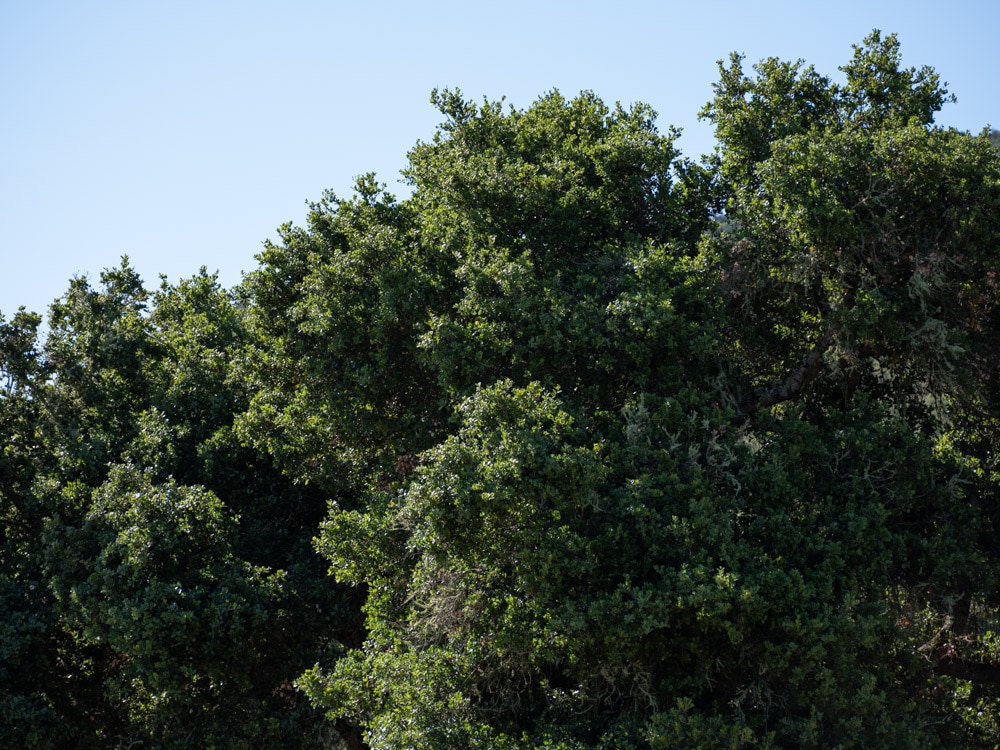
Making three shots for each variation and picking the sharpest, I exposed at base ISO of 100 for the GFX, and 64 for the Z7. I used pinpoint AF on the Z7 with the zoom, which means that both cameras were using CDAF. The CDAF on both of them is so good that there was far more variation between the sets of shots than there was within each series of three at the same settings. I could almost have flipped a coin to pick the sharpest. I used AF-S and a small spot, focusing on the target grove of trees. For the Apo-Sonnar, I focused at maximum magnification with peaking turned on.
Images developed in Lightroom, with default settings except:
- WB set to daylight
- Highlights – 19
- Shadows +50
- Adobe Color Profile
- Sharpening 20, radius 1
I did not try to defeat Lightroom’s silent distortion correction.
We’ll look at some very tight crops.
If you’ve seen these here before, just jump to the images. If not, I need to spend some time telling you how to interpret them. They’re at roughly 250% magnification, enlarged to 700 pixels high on export from Lightroom. If you just want a rough idea of the differences, just look at the images as displayed in-line in the posts. However, if you wish to compare these images in detail, you should view these images by clicking on them to see the source files, then set your browser for 100% zooming. Even better, download them and make Photoshop stacks.
No matter what you do, these crops are all going to look horrible. I’m blowing them up so much so that they will represent the original file after JPEG’s discrete cosine transform has had its way with them. If you want to get a good idea of what the images would look like printed, get far away from your monitor. No, farther than that. Put a bunch of the images up on the screen and back up until the best one starts to look good. Then look at the others. There’s another reason why these images won’t look like the best thing the camera/lens combination can deliver. They’re demosaiced with Lightroom. Lightroom is not awful, but for a particular image, there are usually better raw processors. I use Lr because it’s a de facto standard, because I know it well, and because it’s got good tools for dealing with groups of images.
Here’s how to use these highly-magnified crops. The dimensions of the GFX sensor is 8256×6192 pixels. If we make a full-frame print from the GFX on a printer with 360 pixels per inch native driver-level resolution, like the Epson inkjet printers, we’ll end up with a 23×17.2 inch print. The 317×246 pixel crop you’re looking at will end up 0.8×0.68 inches (2.12×1.74 cm). Let’s imagine that you or your viewers are critical, and will look at the 23×17.2 inch print from about 18 inches (conventional wisdom is that the distance would be a little greater than that, or 29 inches (the diagonal), but you did buy a high-resolution camera for a reason, didn’t you?). The Z7 crops are 282×219, so they are blown up a bit more to make the picture height the same. As I said earlier, that stacks the deck against the Z7.
The next step is dependent on your monitor pitch, which you may or may not know. Turns out, you don’t have to know it. Just take the 250% crops and view then at 1:1. How high are they? Get out your ruler and measure, or just guess. Let’s say they are 6 inches high. 6 inches is about 7 times 0.8, so in order to view the crops the way they’d look from 18 inches on the print is to view them from 7 times as far away, or 10.5 feet.
In the upper right corner of the GFX 50R frame, and the upper right corner of a 4:3 crop in the Z7 frame:
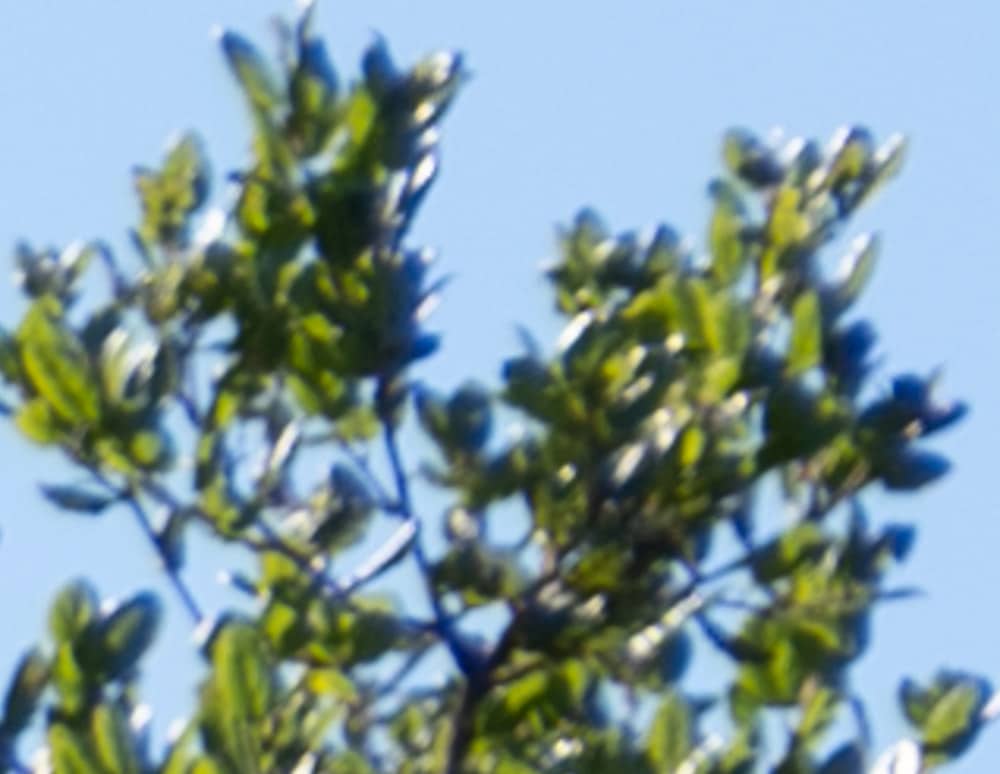
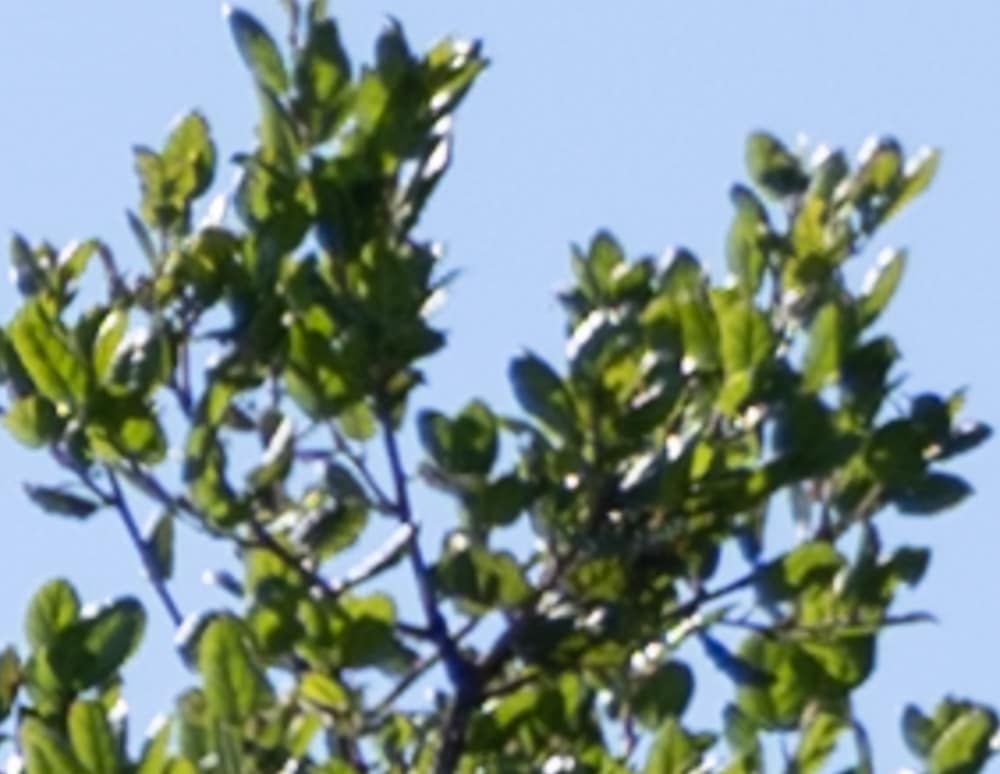
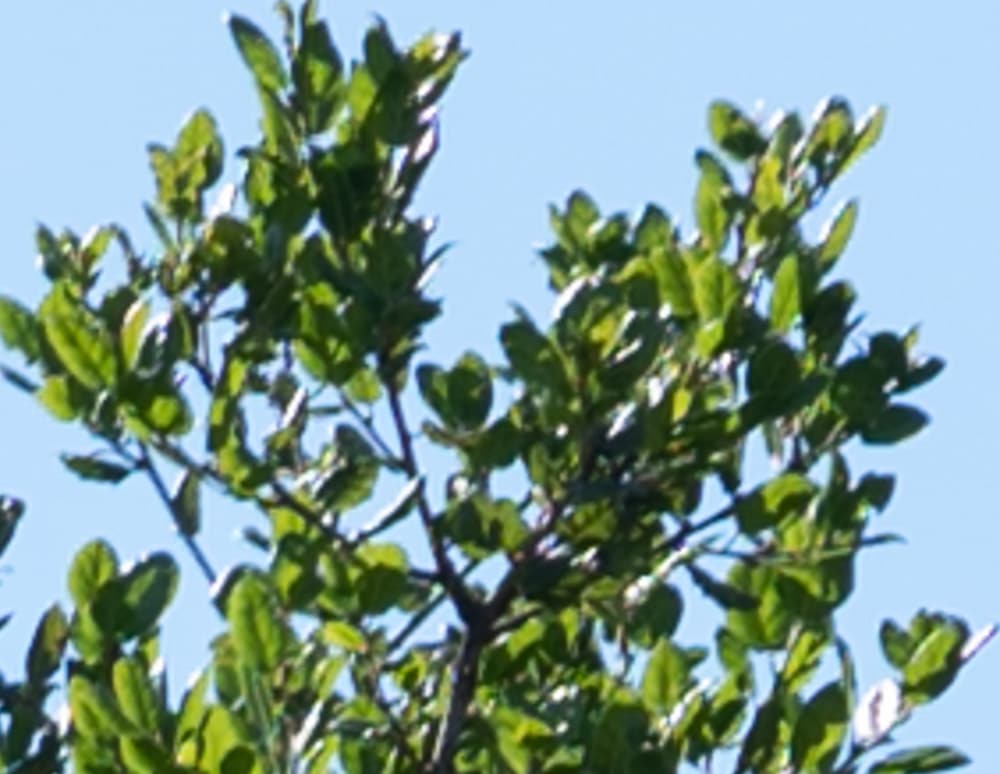
The Fuji image is soft, and has a lot of blue fringing. The Nikkor image has fewer chromatic correction issues and is sharper. The Zeiss image is spectacular.
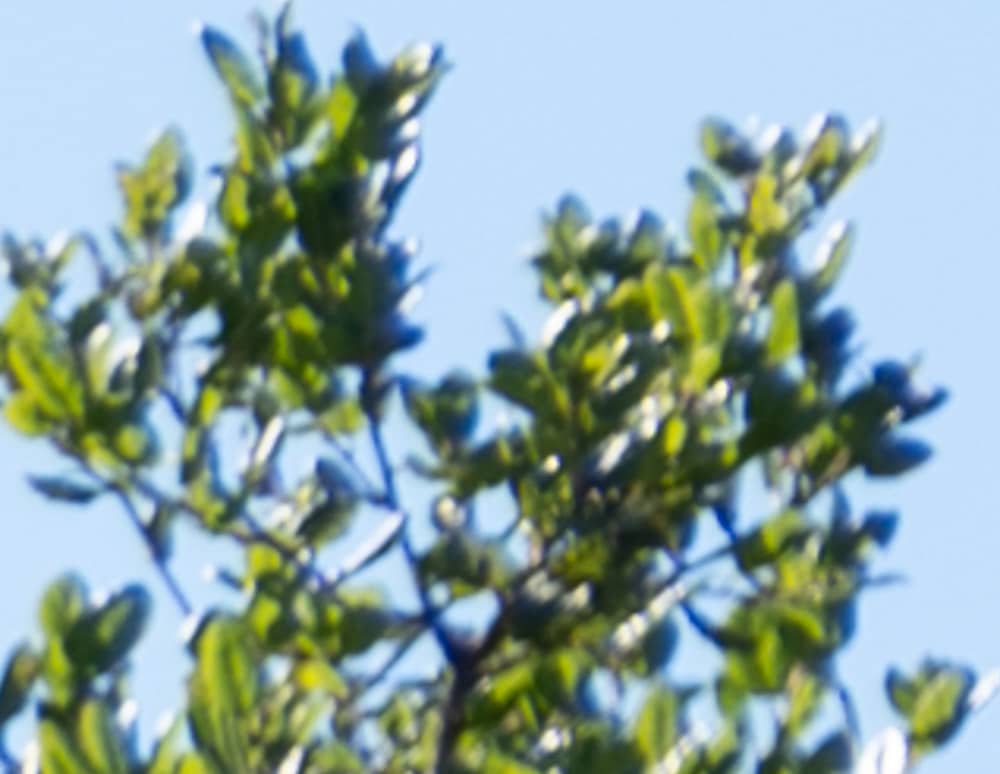
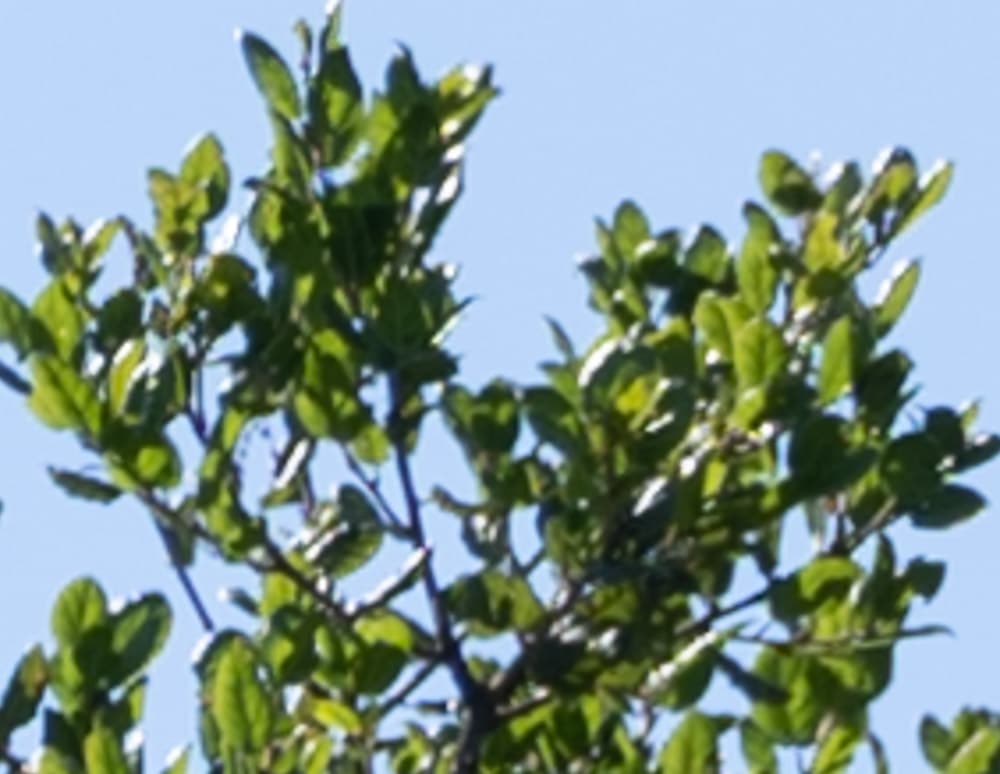
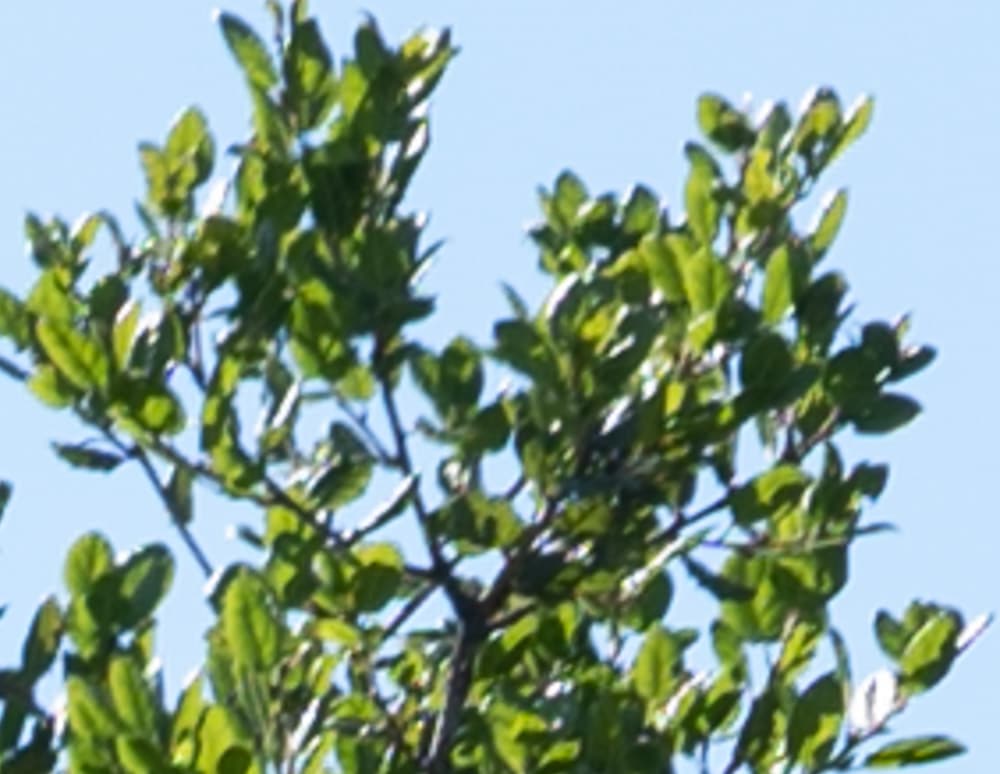
The Fuji image is sharper than it was the first time around, but you could say the same thing about this set of images that I said about the first set.
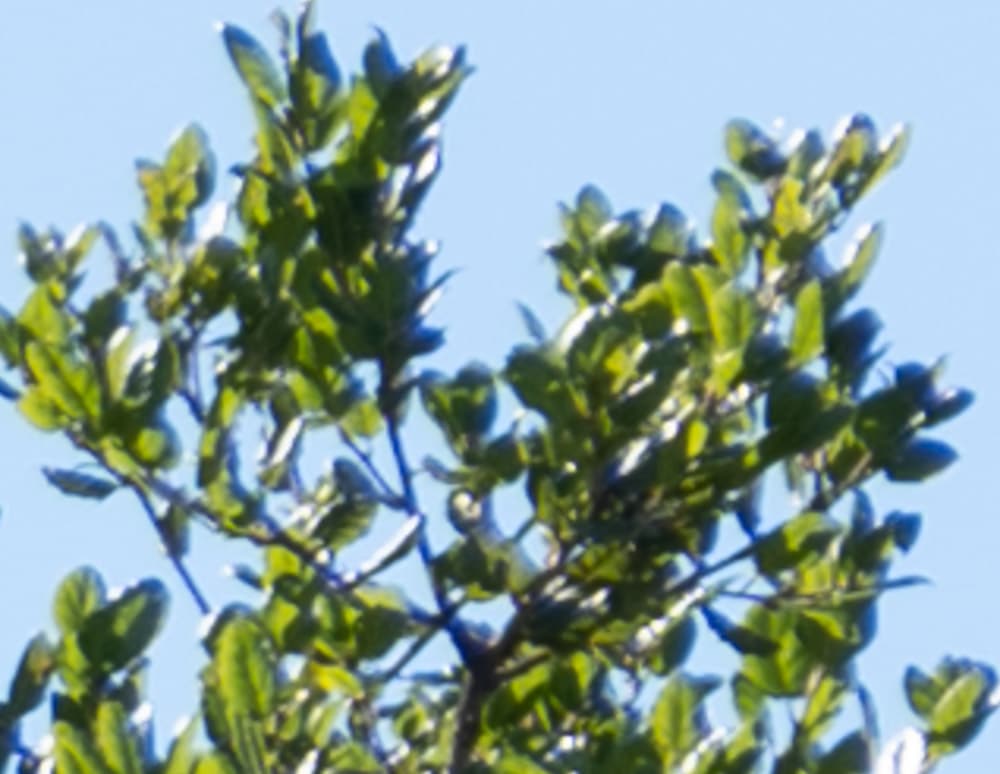
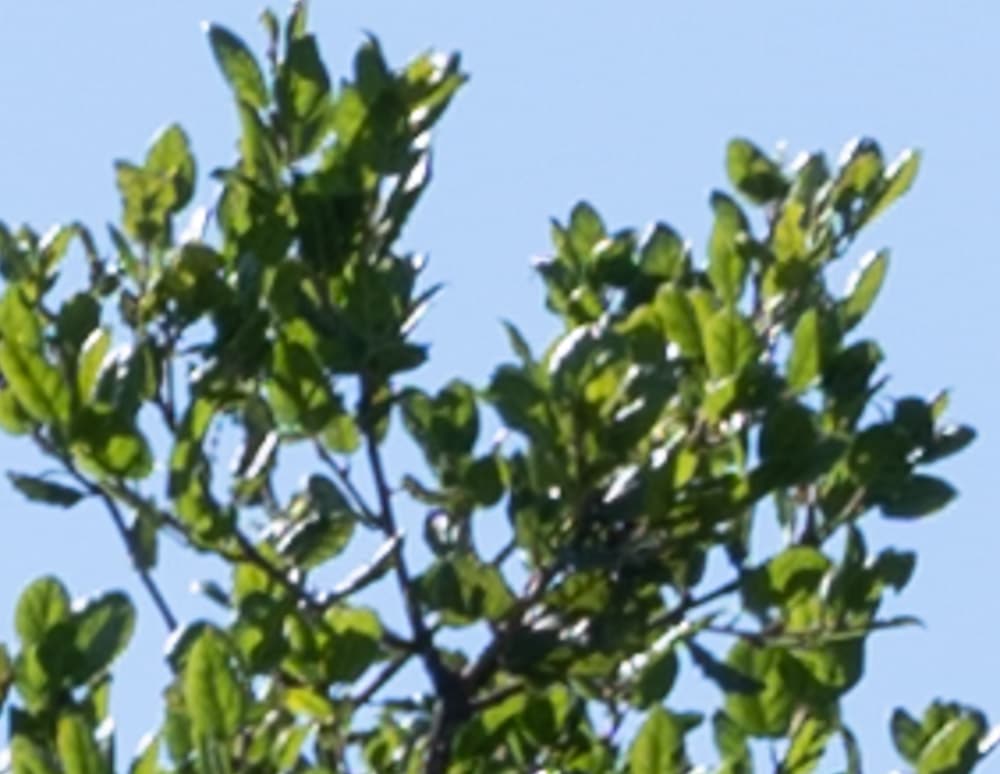
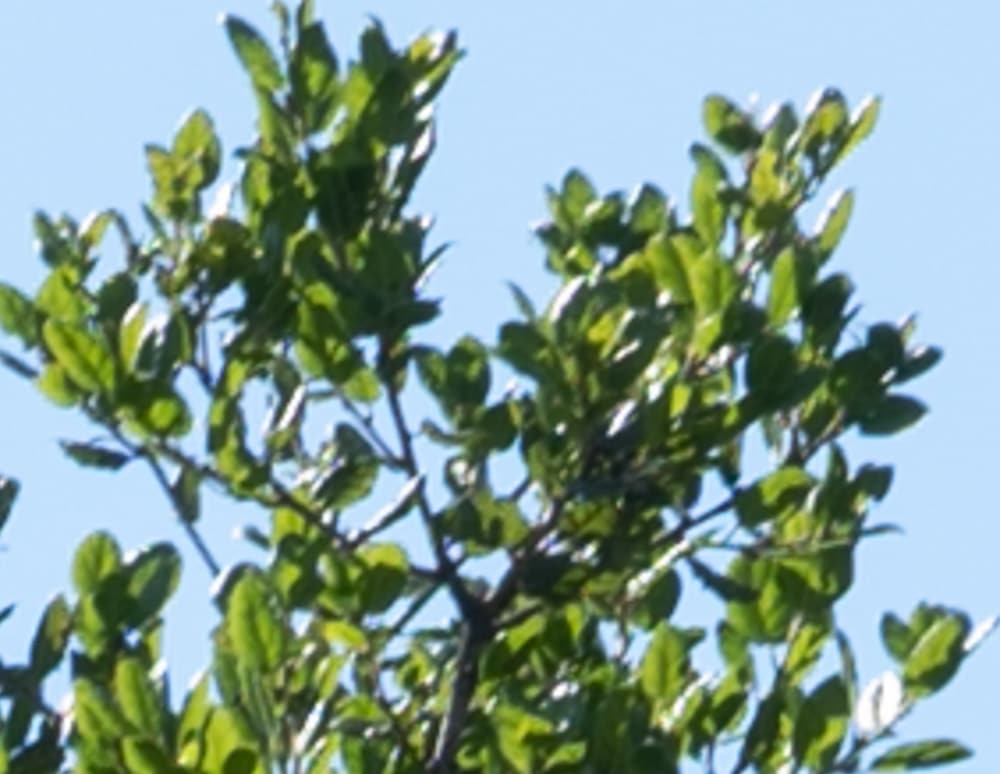
Now everything is roughly the same sharpness, but the Fuji lens still has chromatic aberration problems.
Here’s what I said at the end of yesterday’s post:
Both the zooms are better, but haven’t caught up with the prime. Not a surprise, really.
Looks like you should stay away from the long end of the Fuji zoom if you want the ultimate — well, ultimate zoom — quality. The Nikon’s performance at the long end is impressive, erasing the format advantage of the GFX 50R here.
I see no reason to change that.
Brandon Dube says
Thanks, Jim. Much better clarity in these. The Fuji zoom is still unfortunately soft at this end.
Darrel Crilley says
What a resource this blog is. I’ve been using the GFX system for some time to shoot Alpine mountsins in Europe. A friend of mine whose business is making alpine images – Thomas Crauwels – has transitioned to GFX. The severs are complex, full of fine , fragmented detail and the pair of us have had concern the 100-200 seems soft at about 130mm outwards. Too soft to capitalise on the 100 sensor capability. This and other comparisons to the 45-100 seem to confirm our combined experience and we are not imagining things. Thomas prints to a huge scale – that’s his business. Lot of softness negates the advantage of the GFX above using the 60MP Sony with a GM zoom above 100mm. Not so with the 45-100. It is astounding. The 250mm , when able to be used, is the lens which causes jaws to drop open when shooting big mountains in winter on the GFX system. Thanks again for all the information , testing and objective data yiu have put out there to help gauge what is up to scratch, what not in these amazing photographic times.